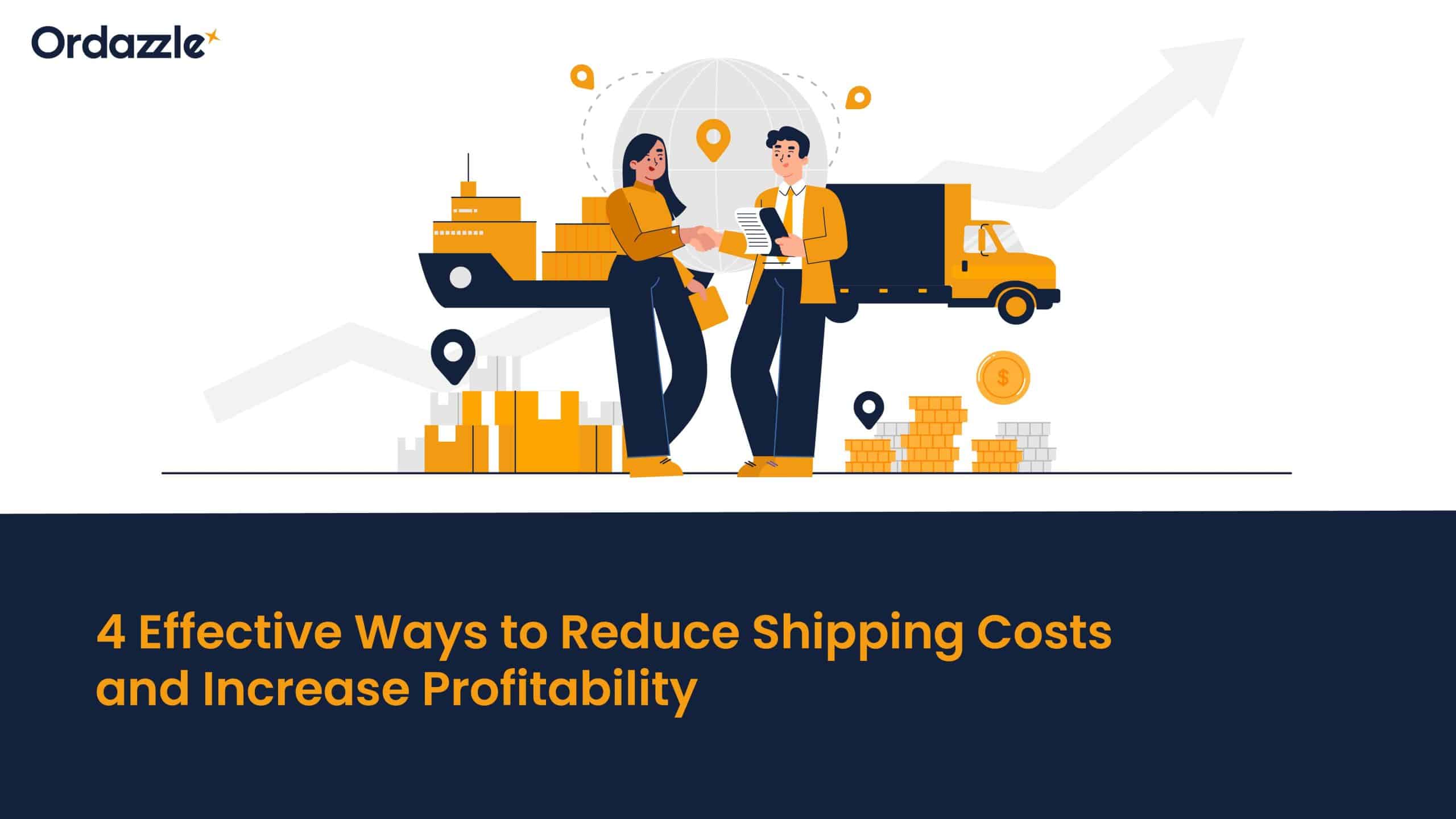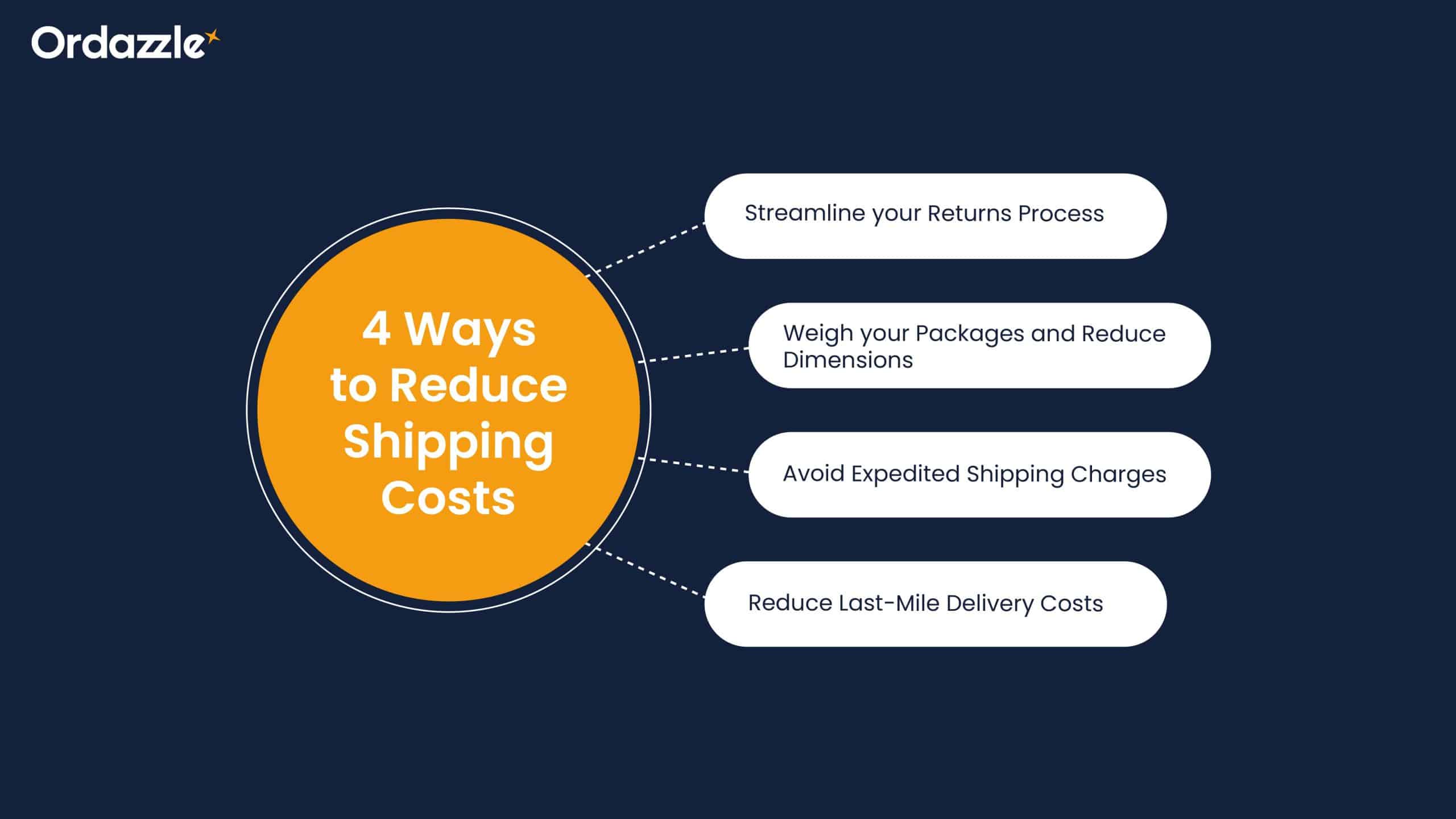
4 Effective Ways to Reduce Shipping Costs and Increase Profitability
Managing costs and maximising profitability are the most important objectives for achieving sustainability and success. Every business wants to optimise its bottom lines while maintaining the quality of its service.
But in reality, it’s not always so straightforward. The modern logistics industry has many challenges, from hidden costs and sudden increases in expenses to providing consistent customer experience and handling returns.
It puts a financial burden on both retailers and e-Commerce businesses. Fortunately, there are many ways to reduce shipping costs.
The various connected dots in logistics include packaging, order management, fuel surcharges, express delivery, courier/parcel insurance, failed deliveries, tracking, cash on delivery, and various other shipping expenses.
Therefore, to keep your competitive edge sharp, it is essential to use various strategies to bring down these costs and increase business efficiency.
In this blog post, we have some cost-effective, tried-and-tested ways for e-Commerce businesses to save on logistics costs and improve profitability. Read on.
4 Ways to reduce shipping costs for retail and e-Commerce businesses

Your returns are also an important part of your logistics process. In fact, it’s an entire concept in itself – contemporarily known as reverse logistics.
As you can guess, implementing a systematic return process is essential to your shipping cost optimisation efforts.
It could be something as simple as having a properly structured returns policy or something as advanced as having a separate returns portal that takes care of all reverse logistics tasks for you. Whatever way you choose, a dedicated process to deal with returns is vital to reduce shipping costs.
Many companies have a proper portal for handling returns. Instead of customers having to get in touch with a customer service agent, they can just simply enter their order number and the reason they’re making a return. If it matches certain criteria for a paid return, the portal will process the return.
2. Weigh your Packages and Reduce Dimensions
If you’re not using flat-rate shipping, shipping heavier items can cost you more. Moreover, in addition to weight, logistic carriers consider the dimensions of the order when calculating shipping costs.
If you’re putting your lightweight products in too big of a box, you will need to pay more because of the space the package occupies.
To reduce package weight and, ultimately, reduce shipping costs, try the following:
Leverage “ships in own container” (SIOC) packaging. Doing so means your product packaging is what your shipping label goes on. So, you don’t have to add a box on a box.
Create custom packaging options with smaller dimensions as per your product requirements to fine-tune your dimensional weight, i.e., make it a tighter fit rather than having items moving around in a box.
In short, avoid shipping more air than necessary.
Also Read: How to streamline e-Commerce operations with logistics management software
3. Avoid expedited shipping charges
Expedited shipping charges can destroy your bottom line. In fact, expedited delivery can cost you 4 times more than normal shipping.
The best way to avoid these hiked shipping charges is to speed up your order processing. If an order wastes away at the fulfilment center for several days before it’s packed and picked up, you essentially shorten the window for on-time shipping.
You should focus on optimising your processes so that orders are handed over to the carrier in the shortest time possible to meet the delivery expectations.
If a customer pays for expedited shipping and the order departs the fulfillment center late, you risk losing money—this may require you to use a quicker shipping service, forcing you to cover the difference out of your own pocket.
A dedicated logistics management software goes a long way in helping you optimise your shipping and logistics process. It provides end-to-end visibility in your logistics processes, helps you identify areas of improvement in your warehouse and fulfilment operations, and significantly reduce shipping costs.
4. Reduce Last-Mile Delivery Costs
The last mile is the most expensive stretch of shipping. And with rising delivery expectations and growing urbanisation, optimising the last mile is critical for success. Efficiency routing and scheduling are key to making that happen.
Ordazzle’s platform uses advanced predictive technologies for real-time visibility into logistics and dynamic routing, helping businesses reduce unnecessary costs and streamline last-mile operations.
Leave your shipping cost optimisation to the experts at Ordazzle
In the current competitive e-Commerce landscape, managing shipping costs for e-Commerce is crucial for customer satisfaction and profitability.
Strategies like optimising packaging, negotiating carrier rates, investing in a logistics information system, and using it for real-time rate comparisons can help you reduce shipping costs.
These steps can help you meet growing consumer demands for seamless, fast, and affordable delivery, making shipping cost optimisation crucial for success.
Ordazzle’s logistics management software can help you make the most of all the tips shared above and optimise various parameters to bring down logistics costs.
From handling shipping labels and invoices to compiling manifests, our logistics information system simplifies the process. Keep end-to-end visibility over multiple orders spanning various channels and carriers simultaneously and never miss any key detail.
Get in touch with us today to get started!



